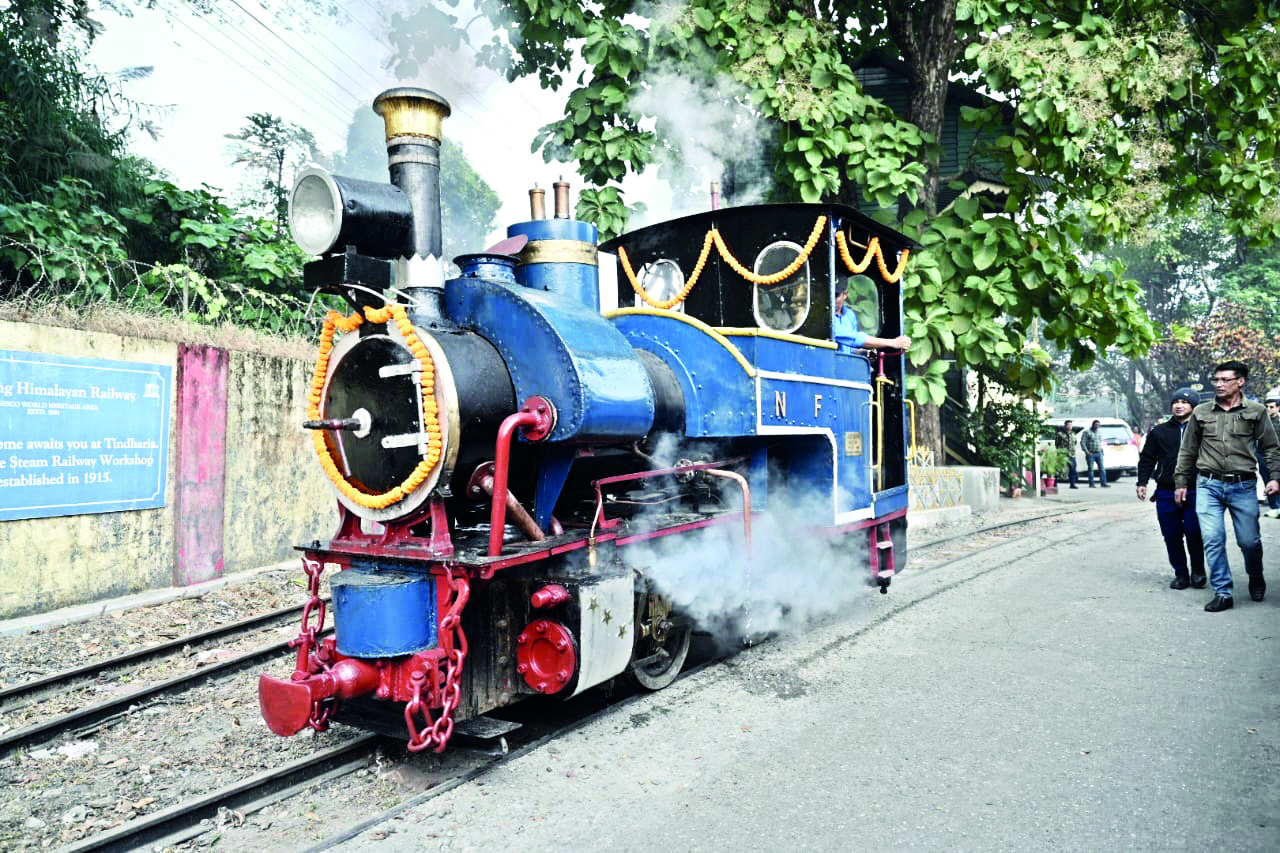Century-old world heritage ‘Baby Sivok’ chugs again

Darjeeling: With the signature whistle shattering the mountain air, the world heritage “Baby Sivok” once again chugged out of the Ghoom Railway Station, thereby recreating history. The Darjeeling Himalayan Railway (DHR), a UNESCO world heritage site, added another jewel to its crown with the restoration of this century-old steam engine.
Tracing the history of the 0-4-0 tank locomotive ‘Baby Sivok,’ David Charlesworth, Director and founder member of the Darjeeling Himalayan Railway Society and David Churchill, the Society’s Technical Officer have stated that the locomotive was originally manufactured by Orenstein & Koppel in Germany around 1913 as a standard design of contractor’s engine. It is believed to have been used during the construction of DHR’s Teesta Valley and Kishanganj branches, having gained the name ‘Sivok’ from the Sevoke Station on the Teesta line.
The engine is supposed to have been rebuilt at Tindharia in 1945 and was sent to Delhi in 1953 for the Indian Railways Centenary exhibition. Some modifications were supposed to have been made to the engine with the saddle tank and bunker added to resemble a “B” Class engine. From 1957 to 1999, it was on display outside the Siliguri Junction. In 1999, it was taken to the Tindharia workshop to be reinstated. In the year 2000, it chugged once again. However, being a small engine it could not do much and was finally retired to the new Railways museum at Ghoom and has been on display. The engine has been painted a number of times since 2000.
Over the years, it fell into disrepair, but recognising its historical significance, NFR transported the engine to the Tindharia workshop.
The restoration, led by skilled in-house staff at the workshop, brought the steam engine back to life while retaining its vintage charm. Chetan Kumar Shrivastava, General Manager of Northeast Frontier Railways, officially flagged off the restored engine on December 7 during the
Ghoom Festival. “The restoration of the Baby Sivok is a testament to our commitment to preserving the legacy of the Darjeeling Himalayan Railway. It offers tourists a unique glimpse into the engineering marvels of the past,” stated the GM. The ‘Baby Sivok’ serves as a tangible link to the past and is poised to become a major attraction for Railway enthusiasts and tourists alike. The restored steam engine now stands as a centerpiece at Ghoom Station. In 1879, work had first started on the DHR, then called the Darjeeling Steam Tramways. The name of the Rail company was then changed to Darjeeling Himalayan Railway Company in 1881 on completion of the section from Darjeeling to Siliguri. The DHR was inscribed a world heritage by UNESCO on December 2, 1999.
This year marks the 25th year of the DHR being inscribed a world heritage.



